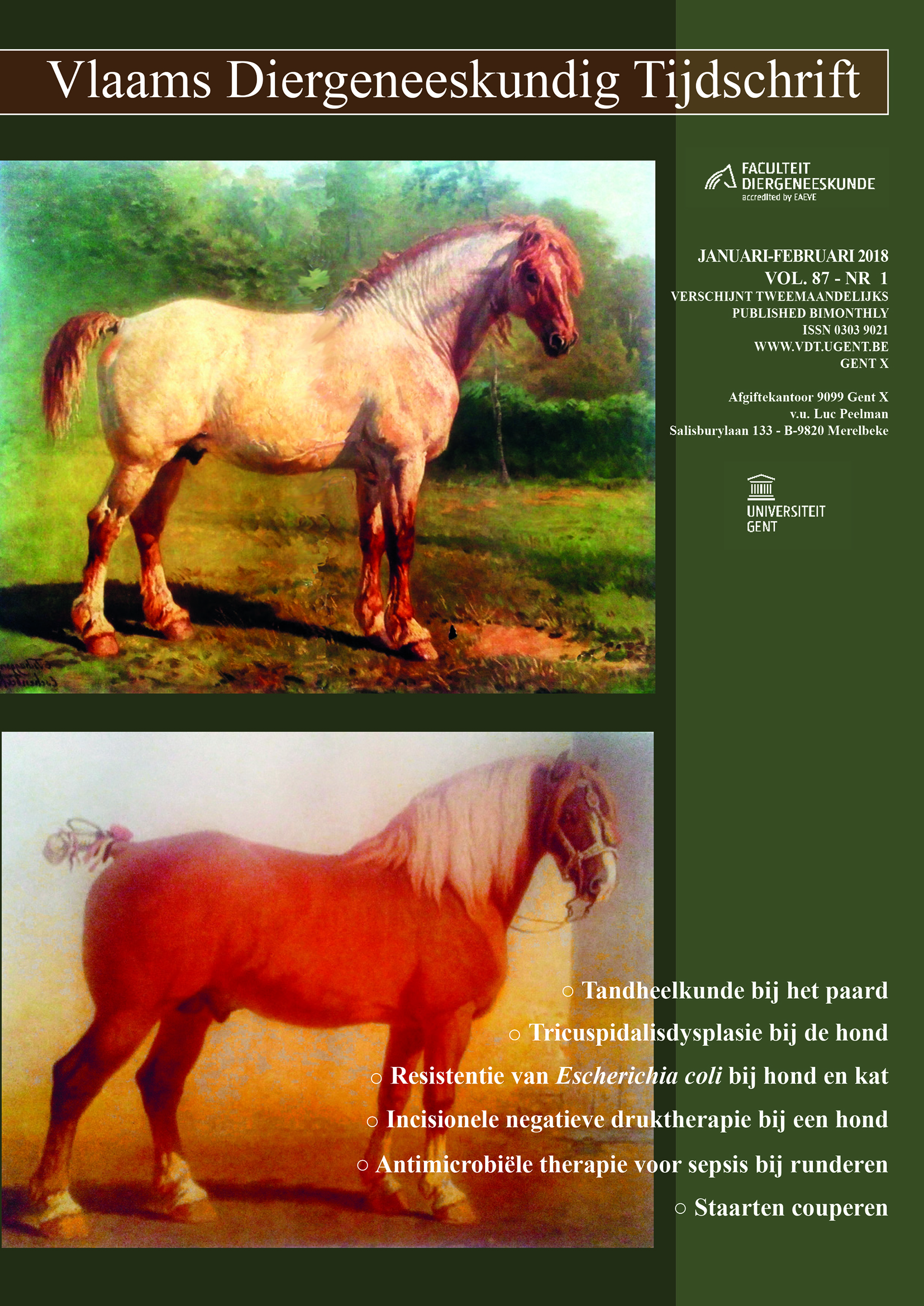Rational antimicrobial therapy for sepsis in cattle in face of the new legislation on critically important antimicrobials
DOI:
https://doi.org/10.21825/vdt.v87i1.16094Abstract
Sepsis is a life-threatening condition in cattle, as in humans. Successful sepsis treatment requires a fast initiation of antimicrobial therapy with a broad-spectrum, bactericidal drug, administered intravenously. However, the new legislation limits the use of critically important fluoroquinolones and cephalosporins in food animal medicine, drugs which are considered highly effective for sepsis treatment and were previously frequently used for this indication. This article aims at providing an overview of the current knowledge of sepsis in cattle to aid practitioners in adapting their decision making process to treat sepsis. Sepsis incidence in cattle is likely seriously underestimated. This disease is almost unexplored in cattle, which makes it particularly difficult to design species specific guidelines. Sepsis diagnosis by blood culture reaches sufficient accuracy with the current laboratory technology. When adapting this procedure to a field environment, difficulties might arise, and the availability of adapted incubators in veterinary laboratories may be limited. However, these difficulties are likely to be overcome. Severe sepsis and septic shock are likely the only indications where the ‘urgency’ criterion of the new legislation would apply, but it is important to realize that alternative antimicrobial treatments with possibly similar efficacy are available.Downloads
Published
2018-02-27
Issue
Section
Continuing Education


